11 Tips on When and How to Prune Fig Trees (2025 Update)
-
Ed Malaker
- Last updated:

Properly maintaining your fig tree can help it look better and produce sweeter and larger figs more often. Fortunately, these trees are easy to care for, but many people aren’t sure when or how to prune them. If this sounds like your situation, keep reading as we provide several tips for keeping your tree pruned so you can receive a large harvest for many years.
The 11 Tips on When and How to Prune Fig Trees
1. Do Your First Pruning
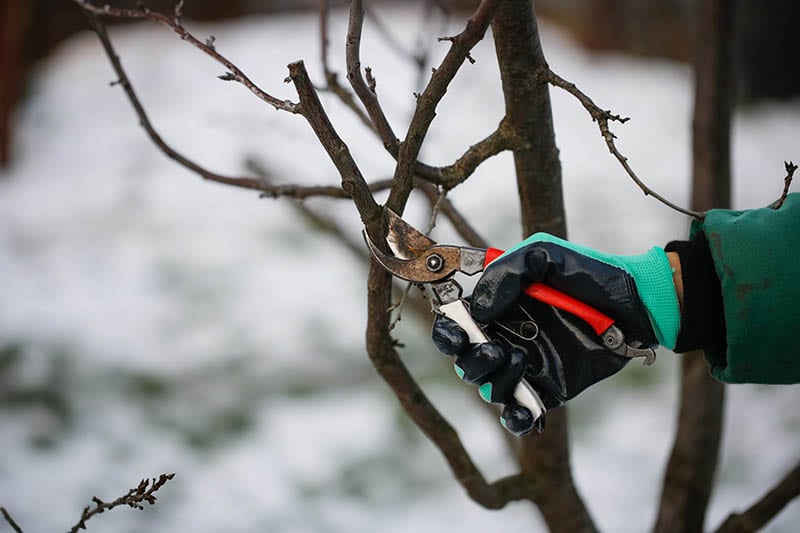
When acquiring a fig tree, you must determine when to prune it for the first time. Most people do it immediately or at the end of the first dormant season. Pruning the tree will help get it off to a good start, and you will likely see a stronger and healthier plant by the end of the first season. However, if the tree that you purchased is weak or in bad shape, pruning it can send it into shock, which will prevent growth and might even cause it to wither. Therefore, we recommend choosing a trusted source to acquire your tree so you can prune it immediately.
2. Prune Away Half the Branches
When you first prune your fig tree, cut it back to about half its original size. Removing many branches helps it focus on developing strong roots, so it will have an easier time acquiring the water and nutrients that it needs to survive. This pruning can also help promote horizontal branches that produce a bushier tree.
3. Prune for Fruit
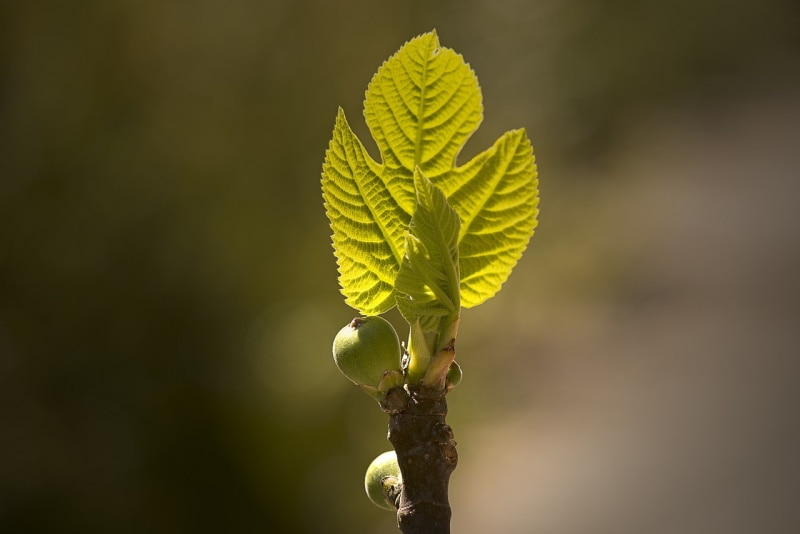
After you transplant and prune your tree, wait until the second dormant season to prune it for fruiting. Choose four to six of the healthiest branches spaced evenly around the tree. Each branch needs to be 6 to 8 inches away from any other branch so it can grow to a diameter of 3 to 4 inches without bumping into the others, which could reduce your crop and lead to splitting and cracking. Once you choose your branches, prune away the rest of the new branches and shoot, leaving only the six chosen ones. These branches will become the main fruiting branches.
4. Prune for Maintenance
Starting during the third dormant season, you can start to prune your fig tree to maintain it. You will want to wait until the coldest part of winter passes to start pruning, when the tree is dormant, to reduce the risk of shock. Pruning at this time also makes it easier to see what you’re doing because there are no leaves on the tree to block your view.
5. Remove Suckers
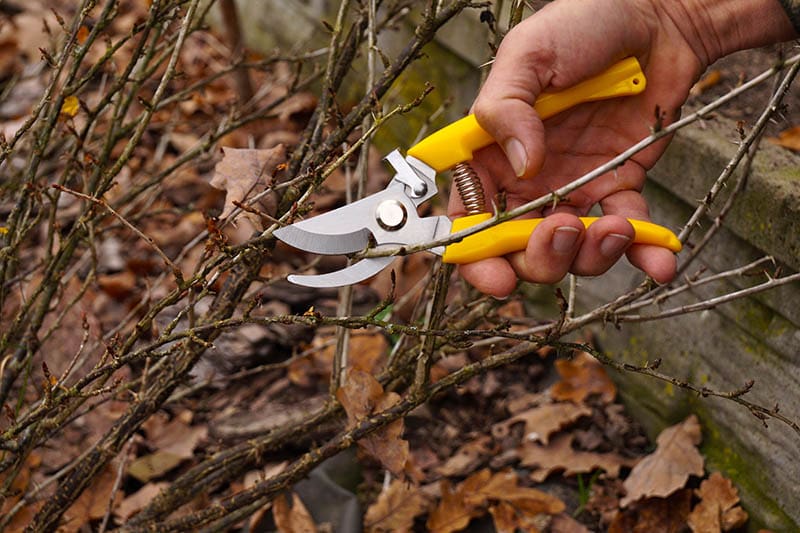
Suckers are new branches that grow out of the base or roots of the fig tree. You should remove them because they won’t adequately support fruit and will only drain the tree of important resources. Allowing the suckers to grow will cause the tree to produce less fruit.
6. Prune Away Dead Wood
Another part of routine maintenance is pruning away the dead and diseased wood if you find any on your fig tree. Letting the diseased wood remain can infect the rest of the tree. Dead wood can also invite disease and insects that can damage the tree. If one of your fruit branches becomes diseased, remove it, and select a newly formed branch late next winter as a new fruiting branch.
7. Remove Odd Branches
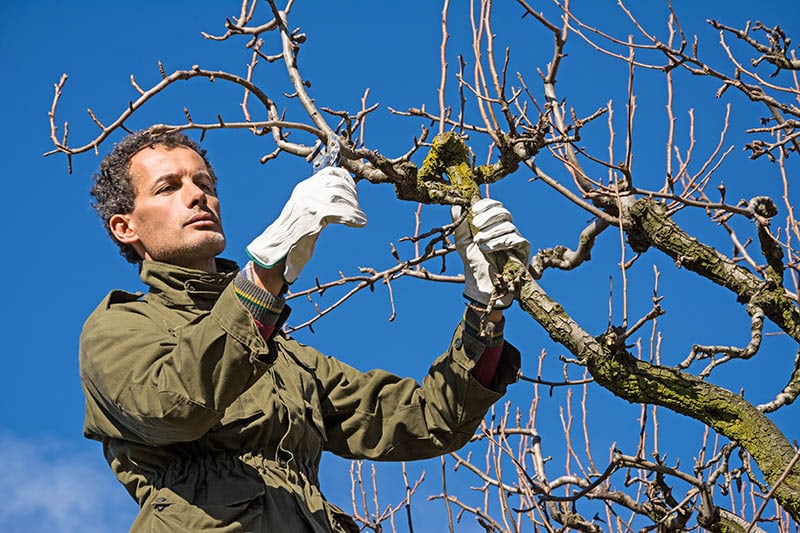
Remove branches on your fig tree that do not come directly from the fruit branches that you chose as the main fruiting branches. Any other growth will rob the tree of important resources that it needs to produce a large harvest.
8. Trim Secondary Branches
Prune away any secondary branches growing from the main fruit branches at less than a 45° angle because they will usually grow too close to the tree trunk, producing less fruit and draining resources. You should also remove any secondary branches that are tangled with other branches.
9. Trim the Main Branches
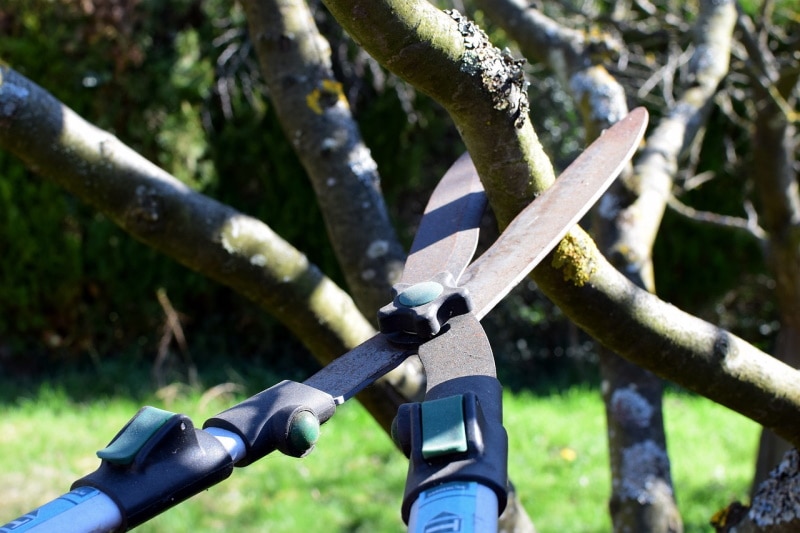
You can usually cut back your main fruiting branches by about 1/4 of their height. Doing this will help produce larger and sweeter fruit next season, and it keeps the tree’s size smaller so harvesting fruit is easier.
10. Remove Extra Leaves in Summer
During the summer, you can allow five or six leaves to grow on new branches, but pinching off any extras will help direct the plant’s energy to produce more figs instead of foliage.
11. Remove Unripe Fruit in the Fall
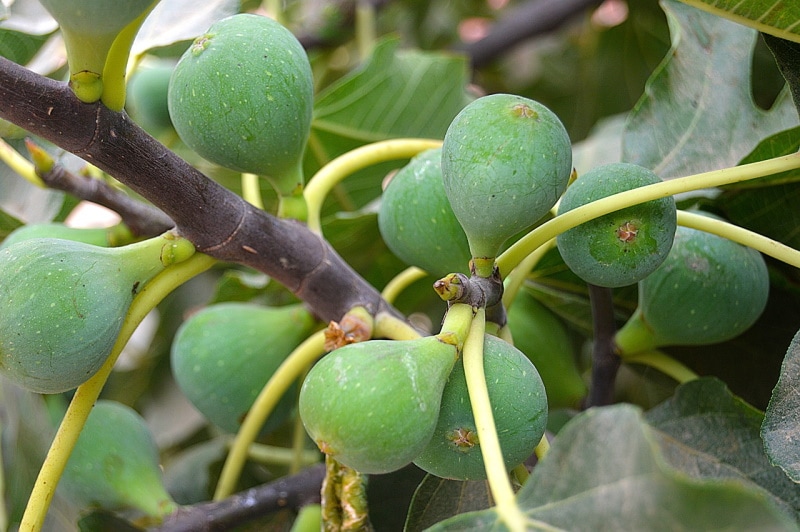
Most of your figs will get ripe during the summer months. However, any fruit that is not ripe by early autumn is unlikely to do so, and allowing it to remain on the tree only wastes valuable resources. Removing it will let the tree put its energy to better use.
How Long Does It Take a Fig Tree to Produce Fruit?

Most fig trees will begin to produce fruit after about 2 years, but it can take up to 5 or 6 years, depending on the growing conditions and variety.
Should I Use Mulch Around My Fig Tree?
Mulch will help the soil retain moisture, so it can be beneficial to a newly planted tree as it gets established, and it’s also a good idea for trees that experience a large amount of dry weather. However, you should avoid putting the mulch up against the tree’s trunk, as it can lead to root rot.
Is It Difficult to Grow a Fig Tree?
Fig trees are not difficult to grow and only require plenty of sunlight and regular watering. Proper pruning will help the tree produce a larger harvest of fruit and keep the tree from getting too large so you can reach the fruit.
Other Tips and Tricks
- When you prune your fig tree, always cut back to a branch or bud so there are no stubs behind, as disease and decaying organisms are more likely to enter through these points.
- Use sharp hand pruners for smaller branches and a saw for thick ones to make clean cuts that won’t invite disease or wood-decaying organisms.
- Always use clean tools when pruning to prevent the spread of disease.
- Always wear protective gloves when pruning your fig tree because the sap can irritate the skin.
Summary
Pruning your fig tree can significantly improve your harvest and the overall health of the tree, and it isn’t difficult to complete by following the steps outlined here. Prune your tree in the dormant season, which is in the wintertime after the coldest part of the year but before the plant grows. When pruning your fig tree, remove any dead or diseased parts of the tree and any shoots or stray branches that can use up valuable resources and reduce your harvest.
Featured Image Credit By: Piqsels
Contents


